Gritco, is a member of the PaKHouse Brands, and a subsidiary of the larger BKB Group. They are situated in the south of the Highveld Maize Triangle, in the small town of Bethlehem. The area is known for its production of wheat, groundnuts, sunflower seeds, and cattle farming. However, the sight of large grain silos proclaims maize as the dominant player.
The Gritco Mill was built in 2018 with the first maize milled in March 2019. The mill receives its maize from nearby grain silos. The company's two maize silos with a capacity of 1000 tonnes each, feed the mill on weekends. The mill is run 24 hours a day, 7 days a week with 20 people per shift running the mill according to schedule. Packing and loading the processed grits is a continuous process.
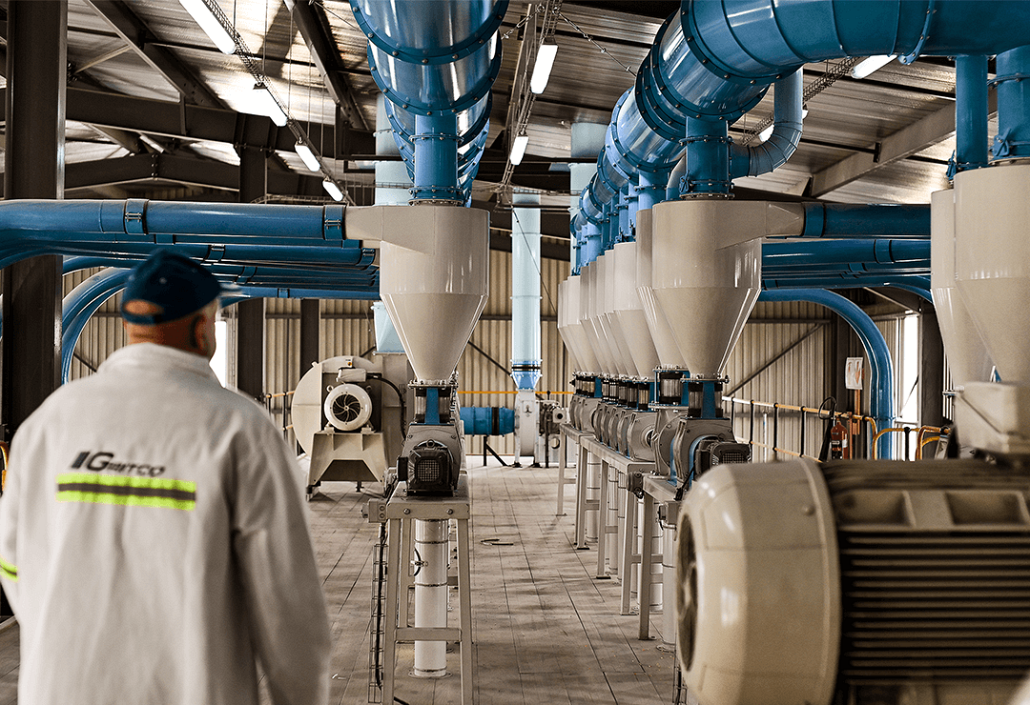
Always on the lookout for innovation and increased sustainability, a recent capital project was undertaken which increased the mill’s capacity to 11 760 tonnes per month. The renovation included the instalment of larger degerminator motors with the latest version of the Satake degerminators inside. This technological overhaul of the whole system increased its efficiency.
According to Dirk Britz, Gritco’s Operations Manager, the company was founded to serve a highly specialised production industry. Currently, Gritco processes up to 450 tonnes of maize per day to satisfy its international brand clients. These clients rely on a contracted tonnage of product delivered monthly. "We deliver a high-quality product, processed according to specification detailing the exact size of the grit, on a large scale,” Britz says. He explains that when a natural product such as maize is milled, the result can vary greatly. Only a certain size and the highest grade is acceptable. Britz acknowledges that there is still vast room for innovation in maize processing. To compete in the international brand market, its primary focus, Gritco needs to comply with strict international food safety controls. Britz believes that being able to provide according to these high standards, reliably while being sustainable, has distinguished Gritco as one of the grit-producing leaders in South Africa.
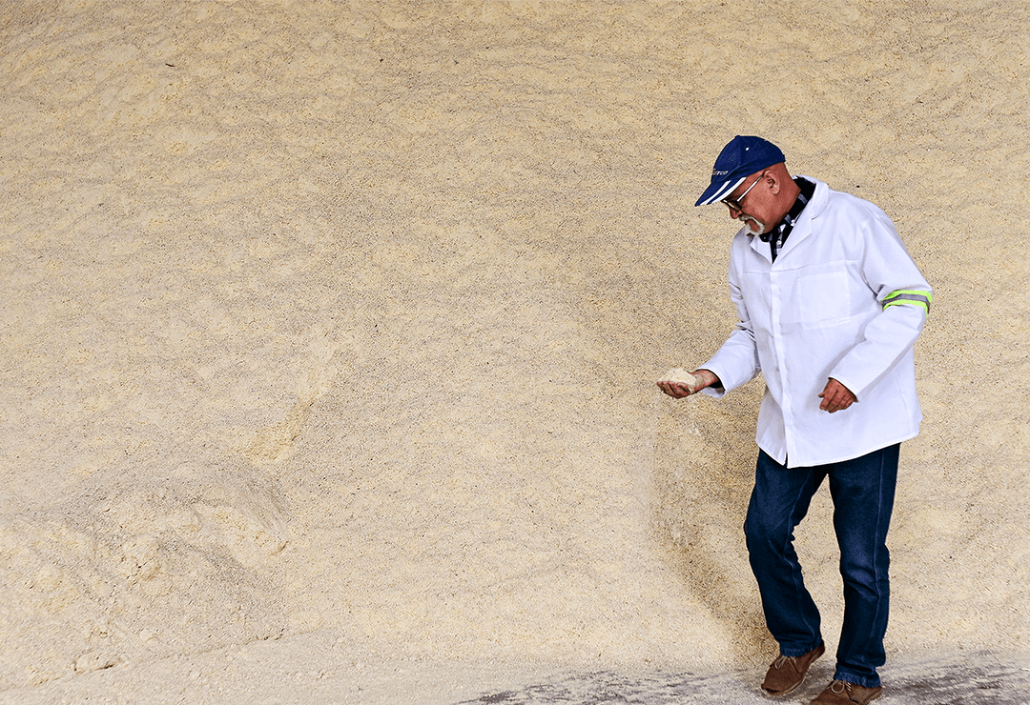
A large percentage of the grit is sold to local producers of maize-based snack food and breakfast cereals. Britz alludes to the “massive market in Durban and Johannesburg”. Small and one-man enterprises that produce the bright red and yellow puffed corn and other corn-based snacks, often seen in the hands of Africa’s youngest consumers. A large quantity of yellow maize flour is also exported to Angola and the Congo. Hominy chop, the crushed maize by-product, is popular as a source of energy, protein and fibre for cattle, sheep, horses as well as being used in the manufacturing of dog food. A percentage of the Gritco product finds its way into the processes of local spice manufacturers. “The bigger players in maize are producers of seasonings and soup powders, an ultra-fine application used as a thickener in products” Britz says.
Noktula Nyembe, Gritco's food scientist, further explains the stringent guideline for raw ingredients, such as maize grit. Grit is the most valued product of the maize milling process and Gritco delivers according to exact requirements. These requirements have formed the standard for all products produced at the plant. Amongst the elements tested for in the maize, are moisture, fat, protein, and fibre which all need to fall within the provided specification. Food security measures range from the initial sampling, as a new consignment enters the plant, to inspecting the vehicles which deliver the product. Any dirt or foreign seeds transferred onto the premises may constitute a breach in the food safety security chain. Likewise, any oil leaks from the vehicles constitute a chemical hazard and thus a food safety risk. While the trucks wait to be offloaded, a maize sample is taken to determine the milling index of the load. “The milling index gives us clarity on the hardness of the maize. For grit milling, you need hard yellow cultivars with a moisture content of less than 14%,” Nyembe explains.
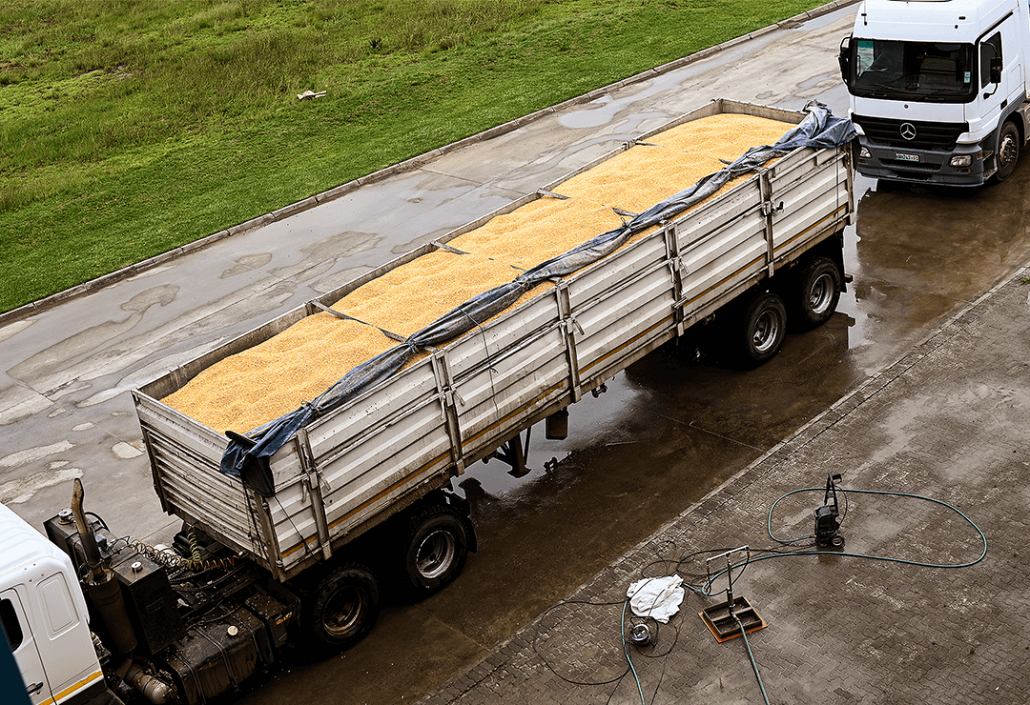
Physical contamination such as pieces of wire, screws and such are removed with a powerful magnet in the pre-cleaning tower. Any chemical contamination on site is immediately cordoned off and thoroughly cleaned. Gritco tests continuously for all possible microbial contamination. External specialist service providers handle any microbial hazards. Due to stringent preventative measures in place for the intake of produce, Gritco has not had microbial contamination in its operation nor in the entire supply line. "We don't play here... we take food security management very seriously," says Nyembe.
A quick walk through the process reveals a fascinating and finely tuned operation. The newly arrived maize is weighed, and samples are taken from different spots representative of the entire load. A multi-separator further divides this representative sample for analysis to grade the entire load. The sample is also assessed according to colour variation, absence of foreign matter, moisture levels as well as the size of the kernels. Bigger kernels result in a higher grade of grit. According to these grading processes, the load will be classified as Yellow Maize Grade 1 (YM 1), the only grade being processed at the Gritco Mill in Bethlehem.
The grain storage silos have an intake capacity of 150 tonnes per hour. From silage, the grain is transferred to the 'pre-cleaning tower' where any foreign material - remnant sticks, leaves or pieces of cob - are removed. From here the maize is sent to the first and second conditioners and then to the degerminators. Each floor at the mill fulfils a dedicated function in the milling process. On the top, different-sized sieves 'screen' the grain by gravitation. The kernels are cleaned and sorted to collect the same sizes together in separate first-conditioning bins. There are two large-kernel bins and a small-kernel bin. It takes roughly four hours for the kernels to move from the top to the bottom of the bin. This is done to ensure that the kernels absorb enough water into their core and that the outer fibre-filled bran layer can easily be removed. A constant moisture level inside the kernels also prevents flaking during the remaining part of the process. In the next phase, the kernels pass through a colour-sorter to remove flawed kernels. Advanced camera-based technology is used to inspect every single grain at varying wavelengths for colour uniformity. Darker and white kernels initialise a reject system. An ejector uses a quick blast of compressed air to remove the rejected kernel. These defective grains, together with the removed bran, will be used to produce hominy chop. Eventually, the maize is milled to the specified size. On the bottom floor of the mill, the different products are packaged and made ready to be sent to their various destinations.
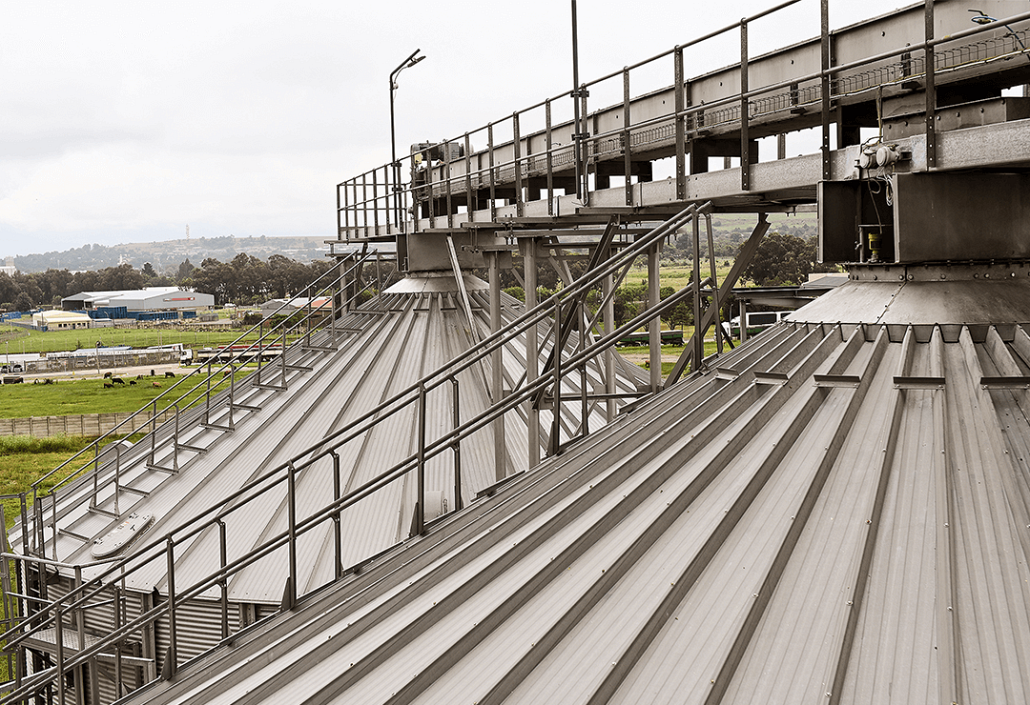
According to Britz, the greatest risk to the mill is power instability. The mill requires approximately 1100kVA availability. The unpredictability of the power supply can wreak havoc on a factory that needs to run for 24 hours, 7 days a week. During load shedding the mill is forced to switch over to the 3 x 500kVA generators. However, a complication for this switch-over is that the mill must be allowed to run empty before the generator power can be implemented. This means that another downtime of 30 to 45 minutes is wasted at the onset of each load-shedding period. Before going back on to the Eskom grid, after load shedding has concluded, the mill again must run empty for another 30 minutes gone before the milling process can start again. This wasted time amounts to two full days of milling, or 800 tons of product, lost to load shedding each month.
In addition to the time that is lost, there is also the cost of fuel to consider. The generators gulp 3000 litres of diesel to run the mill for eight hours. Due to load shedding, the mill uses 3000 litres of diesel every day of the month. The team is currently seriously investigating alternative solutions to alleviate the problem.
The positioning of the Gritco mill could also suggest a certain level of associated risk. Each day, the road that leads to Gritco accommodates a range of 17 to 19 interlink trucks loaded with corn, while the mill sees the departure of 12 to 14 interlink trucks, laden with maize products.Despite the presence of various other significant industries such as Coca-Cola, Sasko, Afgri, South African Breweries, Nestle, and Raubex, along with petroleum and engineering companies, the roads connecting to and from Bethlehem have deteriorated over the recent years. In response, Gritco supports the maintenance of infrastructure around Bethlehem to a large extent in collaboration with the other industrial heavyweights mentioned.
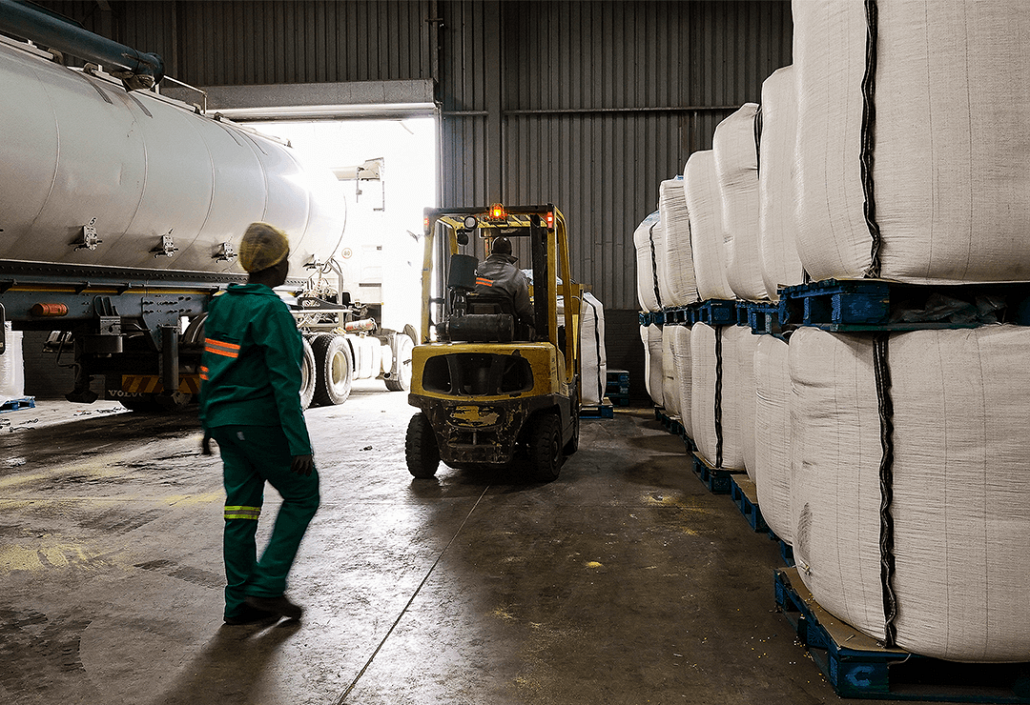
Taking a step back to see the bigger picture of the BKB Group, one observes a clear and determined focus on individual growth, and a strong drive towards developing available human potential. “The mill started with a workforce of 90 people working here,” Britz recalls. He says that, compared to other large corporations in South Africa, BKB has a uniquely empowering attitude towards its workforce. “Top management provides a lot of support, but also the freedom to make decisions in the workplace.” Proof of this policy is a 7-module learner-miller program that Gritco initiated in 2019.
The position of ‘miller’ is the highest senior qualified position at a mill. The ‘miller’ is a person who has mastered every aspect of the milling process. There are currently three participants in the learnership program completing their 6th module. One of the existing four millers at the mill was recently promoted. Therefore, one of these students will have the opportunity to step into this position in 2024. As details about the learner-miller program became known to workers at the mill, possible participation has become an exceptional motivator.
Coincidentally, the individual selected for this coveted position at the mill, after undergoing training, happens to be none other than one of the individuals who joined the community intake four years ago. The colleagues who observed the transformation of Kleinbooi Pateng, the student who transitioned from using a cleaning broom in his first year to becoming a mill hero in just four years, are fully cognizant of the challenging path he undertook, as well as the promising prospects that lie ahead.
Upon Pateng's successful completion of the learnership, the opportunity will arise for another individual to step into those roles. As positions within the larger BKB Group become available, eligible millers who are considering expanding their horizons can find posted vacancies on the notice boards at Gritco.